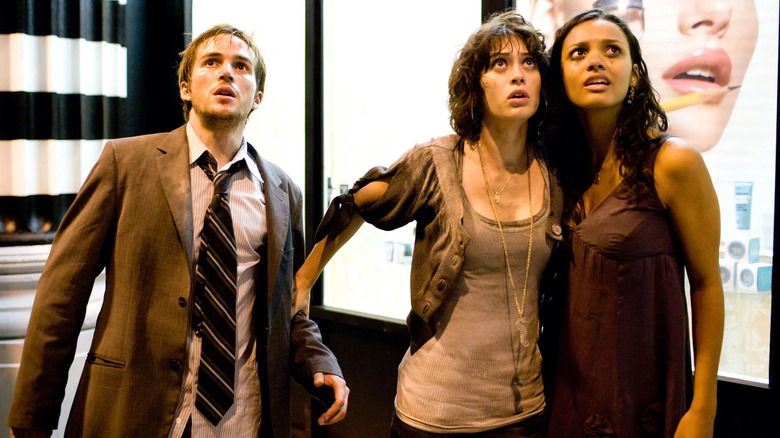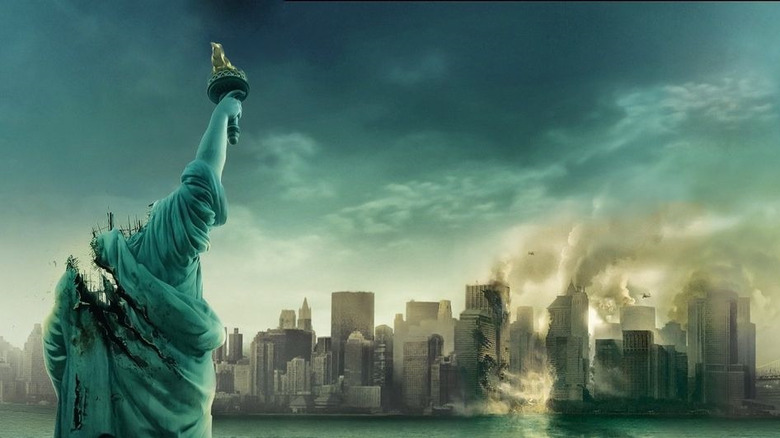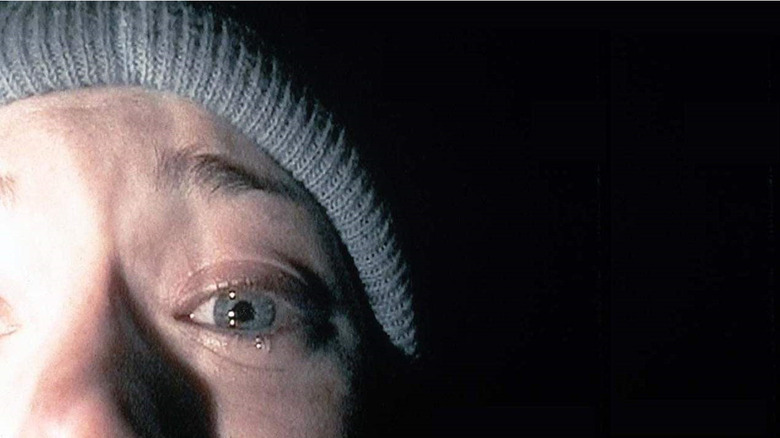There's A Scientific Reason Cloverfield Made You Sick To Your Stomach
An old legend of cinema goes that the pioneering Lumière brothers' 1896 film, a 50-second silent picture titled "Arrival of a Train at La Ciotat," had new-to-the-medium moviegoers scrambling in a panic to flee from an onscreen black steam locomotive as it pulls into a train station. Because the camera is situated at the end of the platform and the extras don't break the fourth wall at any point, an unsuspecting theater patron might react as though the vehicle, chugging toward the camera, might burst through the screen and right into the seats. While there's no hard evidence that the incident ever happened, the story illustrated how effective camerawork can be in disrupting a viewer's perception, to the point of emotional and physical extremes. Audiences, and their sense of equilibrium, have been hostage to genre films ever since.
Fast forward to 2007, when producer and director J.J. Abrams decided (and later told a Comic-Con audience) America needed its own monster that wasn't King Kong. The result was "Cloverfield," a kaiju thriller or a found-footage horror movie or both, depending on who is asked. Set in New York City as a cluster of 20-somethings at a farewell party capture a large-scale monster attack, the story is presented via personal camcorder, with nary a Steadicam gimbal in sight. While adding to the story's authenticity, the cinematography results in the dreaded "shaky-cam" effect found footage movies are now known for, prompting widespread reports of motion sickness among audience members at the film's screenings. But the retching and misery had — and has — a pretty straightforward scientific explanation.
It's all about optic flow
Why does Matt Reeves' "Cloverfield" make folks lose their lunch? It's just a bit of visual side to side ... for 85 minutes straight. University of Toronto professor Bob Cheung, who examines motion sickness at the institute's department of physiology, points at mind-body confusion as the root cause of what he calls "simulated sickness." About 15% to 20% of people have the inner-ear abnormality that can make them sensitive to the specific bit of sensory input, which can also extend to 3D movies as well. Cheung told the Toronto Star:
Because it was filmed from a first-person perspective, the optic flow is coming toward you, making you feel like you are moving forward, when in fact you are sitting in a chair. This sensory conflict is between what your eyes are visually telling you and what your other sensors that govern orientation are telling you. Some people are able to resolve this very quickly and some can't.
So what solutions are available, short of popping a Dramamine before the curtain rises? One answer is to choose seating all the way at the back of the theater. Cinephiles may balk at the idea, but Cheung recommends limiting immersion with the screen and disrupting the optic flow by simply sitting as far away as possible. It works in the same way motion sickness does during car rides: Focusing on static, faraway objects rather than repetitive, close stuff like trees and lampposts can keep the queasies at bay. It's not exactly how Christopher Nolan would want a viewer to engage with his movies, but if it works, it works.
Spewing in the seats
As anyone who has ever made it through the wildly disorienting 2002 Gaspar Noé film "Irreversible" — which features low-frequency sounds to induce nausea in its audiences — can attest, "Cloverfield" is far from the only offender when it comes to simulated sickness. Movie Hurl, a site that rates movies according to their motion-sickness factor, lists "Cloverfield" as a Hall of Shamer, an honor given to the most commonly cited films that churn the stomach. But the kaiju is only at the No. 6 spot; the movie with the worst nausea ratings had a fraction of the "Cloverfield" budget but had audiences reaching for the barf bags all the same.
"The Blair Witch Project" was a true self-funded '90s indie picture that had its captive audiences, to paraphrase star Heather Donahue's fourth wall-breaking whispers, scared to close their eyes and scared to open them. Following a trio of film students armed with cameras in pursuit of a local legend, directors Daniel Myrick and Eduardo Sánchez used a bit of the old and new for their sick-making, subjecting viewers to shaky footage via 16mm film and a Sony Hi8 camcorder. The New York Post reported one of the effects: waves of upset stomachs and dizziness at screenings across the country. But the film's smashing success — a worldwide gross of over $248 million — heralded a rise in found footage (the genre of which Ruggero Deodato's 1980 Video Nasty "Cannibal Holocaust" is generally credited as a progenitor), one that would yield pop culture heirs like Blumhouse's "Paranormal Activity," Barry Levinson's shaky cam mockumentary "The Bay," and yes, the Queasyfield monster.


